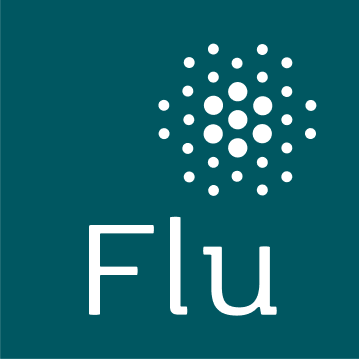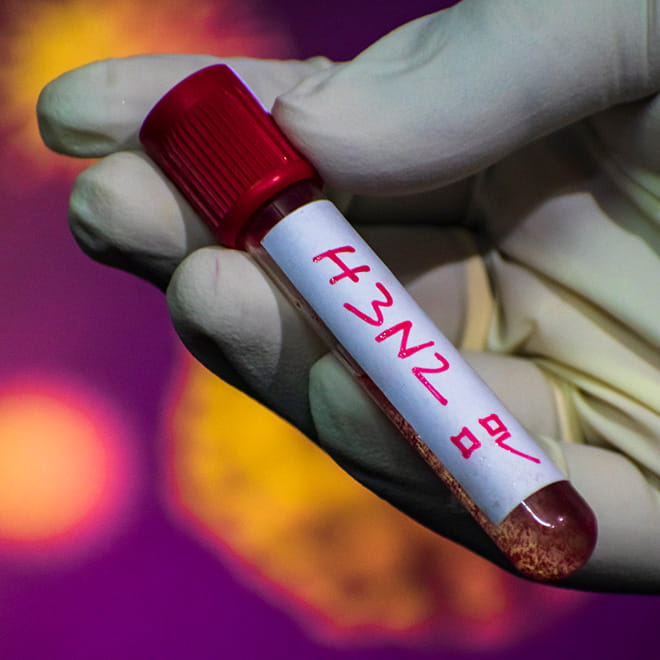Flu vaccine updates are made annually. This change to our quadrivalent flu vaccines is different
Each year, flu vaccines are updated to help protect against the main flu viruses that are expected to spread and cause illness in the upcoming flu season based on year-round surveillance. But soon, a different kind of change to flu vaccines is coming.
Last year, the World Health Organization (WHO) announced their recommendation that flu vaccine manufacturers should remove one of the flu strains that has been included in flu vaccines in the US since 2012: namely, the Influenza B/Yamagata virus.
The reason? Since March 2020, the Influenza B/Yamagata virus has not been detected and is believed to have disappeared, according to the WHO.
In October 2023, the Vaccines and Related Biological Products Advisory Committee (VRBPAC) for the U.S. Food and Drug Administration endorsed the WHO recommendation. VRBPAC committee members agreed that this particular virus strain should be eliminated from flu vaccines in the United States as soon as possible, preferably by the start of the 2024–2025 flu season.
As a result, the quadrivalent flu vaccines that are currently being used in the United States will be changed after the end of the current flu season. By taking out Influenza B/Yamagata, our quadrivalent flu vaccines will become trivalent and include three types of inactivated flu virus–two Influenza A and one Influenza B.
Trivalent and quadrivalent flu vaccines: What’s the difference?
Quadrivalent flu vaccines are designed to protect people against four different types of flu viruses that cause illness. Our current quadrivalent flu vaccines contain two types of Influenza A viruses and two types of Influenza B viruses.
In the 2023–2024 flu season, quadrivalent flu vaccines in the United States were designed to help protect people against these specific flu strains that were most likely to circulate, based on extensive surveillance:
- Influenza A(H1N1)
- Influenza A(H3N2)
- Influenza B/Victoria
- Influenza B/Yamagata
Because there have been no signs of the B/Yamagata virus since early 2020, the trivalent flu vaccines will be designed to help protect people against only what is needed—the three flu strains most likely to circulate in the 2024–2025 season.

Flu vaccines constantly evolve with circulating flu strains
This shift from quadrivalent to trivalent is the latest change in a series within the continual evolution of flu vaccines—a story that began with the introduction of flu vaccines to the American public in 1945.
Influenza itself has a long history of causing significant illness, hospitalizations and deaths for centuries.
When the Influenza A virus was first isolated in the early 1930s, it paved the way for scientists to develop flu vaccines. The main intentions behind flu vaccine development were to help protect unvaccinated individuals—and to prevent the virus from spreading and potentially causing worldwide health emergencies, such as the 1918–1919 Spanish Flu pandemic.
The first flu vaccine that was administered to people in the 1940s was monovalent, containing a single Influenza A strain. In 1942, bivalent vaccines were introduced, including components of one Influenza A virus and one Influenza B virus.
A seasonal flu epidemic in 1947 led scientists to discover that the flu vaccines used that season were not a good match against the flu viruses that were then in circulation, which lowered the effectiveness of the flu vaccines. This discovery led the WHO to create its Global Influenza Surveillance and Response System (GISRS) in 1952. The GISRS has monitored flu viruses that circulate around the world since then, keeping track of the changes that occur in flu viruses over time, called antigenic drift.
Antigenic drift has continued to cause flu virus mutations, which can allow new flu strains to develop and put people who do not have immunity against them at risk of developing flu and its complications. The flu surveillance performed by the GISRS allows the WHO to stay aware of such changes in flu viruses. This work is shared with countries worldwide and allows flu vaccine manufacturers to update vaccines based on the most currently available information about flu activity.
In 1977, the appearance of a new flu strain, H1N1, caused an update to flu vaccines that resulted in the first trivalent flu vaccine. This trivalent vaccine included two strains of Influenza A and one Influenza B strain to help protect people against the flu.




